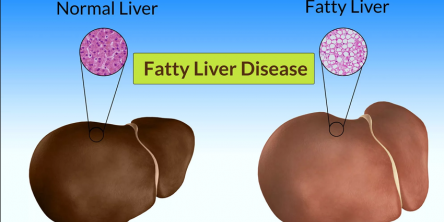9 Meds for Asthma and Allergies

If you have asthma, there's a considerable likelihood that an underlying allergy—to cat dander, pollen, dust mites, cockroaches, or other things— contributes significantly to your breathing difficulties.
Avoiding the allergen is the first line of defense in allergic asthma, but it's not always possible or effective in halting symptoms like coughing, wheezing, and shortness of breath.
The use of medicine is then needed. Here are some typical asthma medications so you may choose the one that works best for you.`
1. Inhaled Corticosteroids
One of the most crucial treatments for any type of asthma, including allergic asthma, is inhaled corticosteroids.
They virtually stop the inflammatory response in the lungs, making them the gold standard. These so-called "controller" medications take a few days to start working, so they aren't intended for temporary symptom relief.
2. Leukotriene Receptor Antagonists
These treatments, including Singulair (montelukast sodium), also referred to as "controller" medications, can treat allergic asthma because they prevent an inflammatory molecule from being generated by the immune system. They can also manage non-allergic asthma, though.
The fact that they are pills and have few adverse effects is a pro. The result is typically modest, which is a disadvantage. They occasionally function quite effectively if you have mild asthma, either mild intermittent or mild chronic.
3. Short-acting Beta Agonists
You may be familiar with these inhalers because they're always carried around by asthmatic characters in movies. These treatments, also referred to as "rescue medications," begin to work immediately to alleviate symptoms.
As bronchodilators, albuterol and similar drugs like Maxair (pirbuterol) act by relaxing the airways. Avoid using these medications often.
Take your quick-relief "rescue drug" before engaging in a triggering activity, such as exercise, to avoid the bronchoconstriction that would have occurred if the inhaler had not been used. For people with exercise-induced asthma 20 minutes can use one before exercising to avoid issues.
4. Long-acting Beta Agonists (LABAs)
People who frequently use rescue drugs may need to transition to long-acting beta-agonists, which have a 12-hour or longer duration of action.
Products like Advair and Symbicort are typical. Long-acting beta-agonists on their own have the potential to exacerbate asthma; hence a combination formulation is crucial.
Although the U.S. Food and Drug Administration (FDA) issued a black box warning for Advair in 2003, the FDA removed the warning in December 2017. This was after reviewing clinical trials and concluding that using long-acting beta-agonists (LABAs) in combination with inhaled corticosteroids (ICS) to treat asthma does not produce noticeably more severe asthma-related side effects than using ICS alone.
5. Antihistamines
The immune system's histamine, which is essential for allergic reactions, is blocked by antihistamines. They may be helpful if your asthma has an allergic component. Antihistamines can lessen inflammation in the nose and lungs when used in combination with inhaled corticosteroids or Singulair. They cost little money, are sold without a prescription, and have few negative side effects. They work quickly, so they can be helpful if you have a cat allergy and are preparing to visit a friend who has one. Antihistamines shouldn't be taken on a regular basis.
6. Omalizumab (Xolair)
One of the few medications designed specifically for allergic asthma is Xolair. Immunoglobulin E (IgE), a kind of antibody created in response to an allergen, is what it binds to.
It won't improve non-allergic asthma, which is aggravated by things like cold air, exercise, and other things that aren't allergies.
Given that Xolair is expensive, it is typically prescribed in more severe circumstances, such as when a patient visits the emergency room repeatedly. It's an injection medicine that comes with a boxed warning about the possibility of anaphylaxis, an allergic reaction that could be fatal.
7. Allergy Shots
Immunotherapy, often known as allergy shots, can benefit mild to moderate allergic asthma. Get a skin test to determine your allergens as the first step. Then, you receive a shot roughly once a week that contains a small dose of the allergen. You start maintenance shots once every three to four weeks up to six months. It can take up to five years for your body to get desensitized to the chemical. Furthermore, it's unclear whether the shots work for conditions other than hay fever.
8. Oral Corticosteroids
In contrast to inhaled steroids, oral corticosteroids are often used in the short term to treat severe asthma attacks. If used over an extended period of time, this drug's stronger variant may have potentially harmful adverse effects.
Your doctor may prescribe oral steroids for four to five days to restore your health if you continue to experience symptoms and a controller drug isn't working effectively to stop them. Prednisone and other oral steroids take 4-6 hours to start working.
9. Theophylline
Theophylline, a bronchodilator marketed under the brand names Theo-24 and Uniphyl, has been used to treat symptoms, particularly nighttime coughing.
It is available in pills, which is a benefit. However, if the dose is too high, there could be adverse effects ranging from diarrhea to neurological issues.
Regular blood tests are required for patients, and the medication is "hardly used anymore."
Similar Articles
We often experience small discomforts or symptoms that seem insignificant, like headaches, fatigue, or brittle nails. Many times, we brush them off, thinking they’ll go away on their own. However, these minor issues might be your body’s way of telling you that something more serious is going on.
According to the World Health Organization (WHO), half to three-quarters of adult persons globally experienced a headache in the past year. Unfortunately, tension headaches are one of the most prevalent symptoms you can have. Furthermore, some tension headaches resemble migraine headaches, making matters worse.
The review of Yakrit Plihantak Churna is going to be amazing. You will know the facts, does it works along its benefits. The liver is the main engine of the body. It is the second largest gland in the body.
A podiatrist is a doctor who focuses on treating foot and ankle ailments. If you have specific medical issues, you may need to see a podiatrist for therapy that your primary doctor cannot offer. Don't overlook pain in your lower leg, foot, ankle, or toes.
A podiatrist is a medical expert who focuses on foot and ankle care. There are various reasons you may need to see one.
Swelling is a common issue that can strike anyone. Occasional leg swelling may occur after a long day on your feet or from sitting too long. However, if your legs are regularly swollen, it could indicate a serious underlying condition. Swelling can cause leg pain, loss of sensation, redness, and itching. If left unmanaged, it can lead to stiffness and difficulty walking.
Choosing the best aesthetic medicine courses will significantly boost your career. Medical professionals looking to expand their practice and stay ahead in the field of aesthetic medicine will find these training programs invaluable
Lower back pain is like a storm gathering over the horizon all day. The dull discomfort, the throbbing feeling, and the stiffness all add up until, like a thunderclap, it explodes into full-fledged pain. It penetrates your whole body, removing choice and control. Your mobility is restricted, making daily tasks difficult, and if not addressed, it can cause permanent damage.
Even though migraine affects over one billion people around the world, it has long been neglected as one of the most devastating diseases on the planet. Migraine headaches are a neurological disorder characterized by recurrent pounding or throbbing headaches, nausea and vomiting, and sensitivity to light, sound, and strong odors









